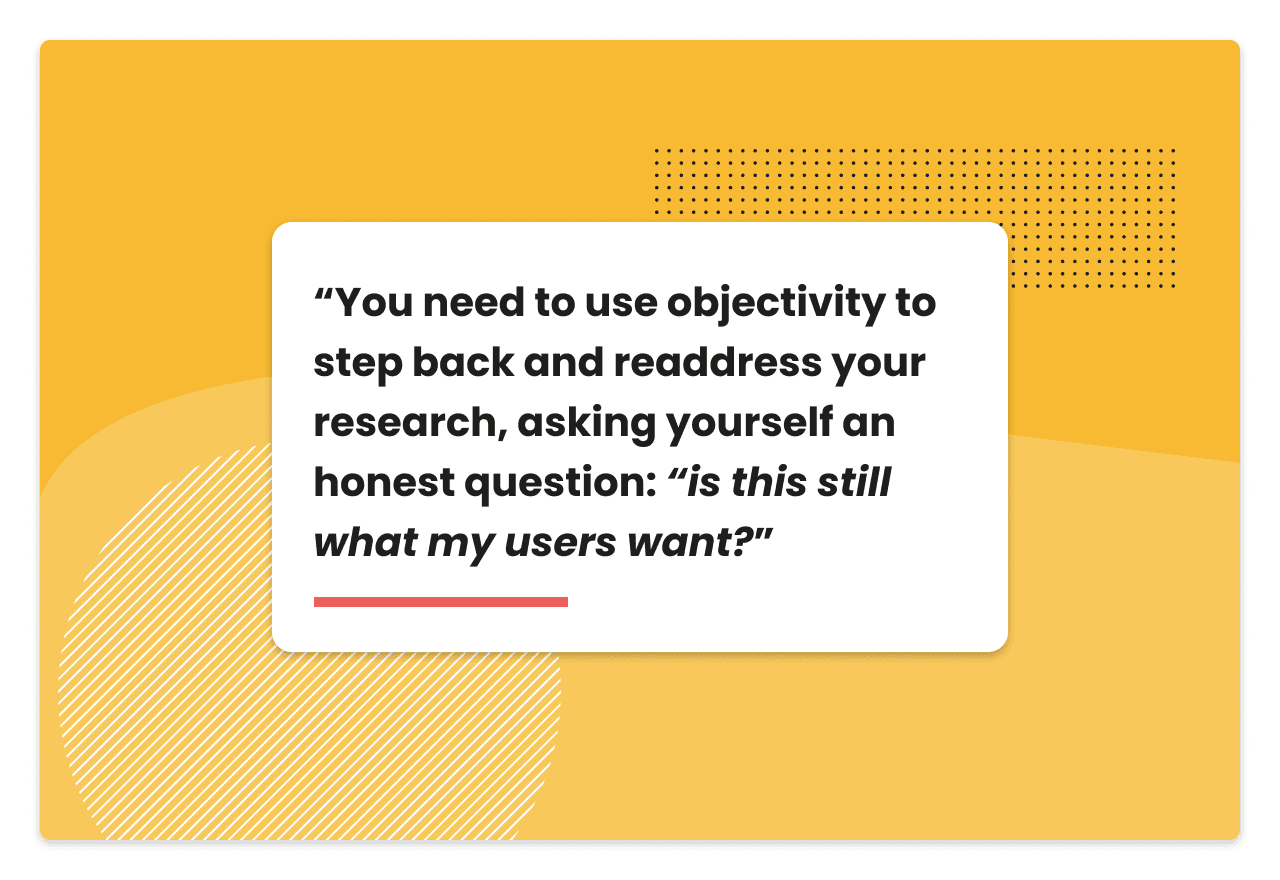Do You Still Know Your Customer?
UI/UX Design
User Research
We’ve recently launched our new Product Performance Optimisation (PPO) service. It aims to take existing digital products to the next level through our user-centric approach and 3-3-5 methodology. Over the coming weeks, we’ll explore some of the issues that lead product teams to come to us for help. If your product is underperforming and the article below seems familiar, visit our PPO page to learn more.
Why user research must evolve to support your digital product refinement journey
In both the creative and tech industries, growth is critical to success. Growth, however, doesn’t always mean in the product or technique. It can also mean growth in the mindsets, talents or behaviours of the creative team.

Too often, teams become entrenched in nostalgia, outdated processes and historic data. Considering that modern technology also allows us access to near-instant metrics and also permits rapid change. This type of outdated mindset spells disaster for a product. We’d even say that it causes the downfall of a product. To rely on outdated information means you’ll never be able to accurately serve user needs or stay ahead of competitors. Your product will naturally fall behind. And yet, this exact problem happens all of the time. Tech teams become so accustomed to their way of doing things that they miss changes in technology, users and the competition. To explore why this happens and how you can stop it, let’s focus on what may be the most important parts of any digital product: user research and UX design.
Knowing your customer is not a one-time gig
If your product has launched to any level of success, we’d guess that you’ve done some level of user research. Otherwise, your product is doomed to fail – see Duolingo’s recent UI update which has caused an intense backlash in fan communities. However, we’d also hazard a guess that your user research approach was done early in the product development cycle and is not being kept up to date. Great user research doesn’t just benefit from being kept up to date – it supports your entire product development process. While there are core techniques you’ll use at the start of a project, such as user personas, journey mapping and interviews, many more are built to support later stages of product development. We’ll let you in on a little secret: clients come to us for what is essentially just a fresh perspective. That’s why we developed PPO. They want an outside eye to look at the product NOW, then map where it will go. But if you update your user research at the right stages of your product, you’ll get ahead of the curve and have real, user-driven feedback to implement.
Update your research at the right stages
Product development, in general, follows a few core stages. Broadly speaking, these are: Pre-launch discovery: the beginning of a project At the start of a project, most businesses are now able to perform some user research to establish:
Who the users are
What their needs are
How digital technology can meet those needs?
This discovery phase can last a while – especially if a product is delayed. In some cases, businesses rely on outdated or broad user insights that aren’t relevant to the product you want to launch. Rather than consider your whole business, this stage should look at the product itself. You might know your business customers, but the product’s users may have unique needs or behaviours. If there have been any delays or you’re launching a significant update, you should return to your initial research and update it. What users needed from digital products in 2020 may be very different compared to what they need in 2022.

Live production: reconsider processes
Production should be tied to user requirements, but too often, teams focus on unnecessary features instead as a result of processes set in place at the start of a project. This leads to feature bloat and products that fail to address new user needs. While you may not be able to change the past, you don’t need to start from scratch with your product – instead, think of how you can transform your existing process to incorporate a user research stage. For example, add usability testing and beta testing to the end of each development cycle to help reinforce your discovery decisions or shine a light on early issues. Whether you’ve already launched or you’re still working on a prototype, it’s always a good idea to reconsider the processes you are following to see if they match your current needs. Try to keep your research up to date through interviews and focus groups.
Post-launch: active management over abandonment
Launching a product should never be viewed as the final step. A launch is ideally just a gradual iteration of your product, building on and improving features that most reflect user needs first. Sadly, too many businesses neglect their product once it’s live. Even if they keep it up to date, it may only be the product team or solo developer left in charge of basic security updates. The once ‘shiny’ project that galvanised everyone into action becomes a day-to-day maintenance job. The irony here is that post-launch is where you can really develop your understanding of users. A live product should be able to capture data about user behaviours and interactions, tracking what is or isn’t working. For a product to truly flourish, it has to continue to serve user needs, even as user behaviours change. The post-launch stage, managed well, gives you the data you need to serve user requirements confidently.

Understand that everything changes
No matter what your business does or what your product aims to achieve, here’s a fact you need to accept: your customer and their behaviour will change as your product grows. You need to use objectivity to step back and readdress your research. Ask yourself an honest question: “is this still what my users want?” At KOMODO, our PPO Package focuses on three cornerstone activities. The first, ‘Know your Customer,’ aims to offer our own insights into your users. We’ll do everything we’ve just discussed for you. We create new personas based on updated interviews and contextualise their journey through your product with data benchmarking. If you’d like to take your app from good to great, you need to readdress your understanding of who your users are, what they need and the updates or changes you can make to serve them. Choose KOMODO's PPO service to get back on track.

Got an idea? Let us know.
Discover how Komodo Digital can turn your concept into reality. Contact us today to explore the possibilities and unleash the potential of your idea.

Sign up to our newsletter
Be the first to hear about our events, industry insights and what’s going on at Komodo. We promise we’ll respect your inbox and only send you stuff we’d actually read ourselves.






